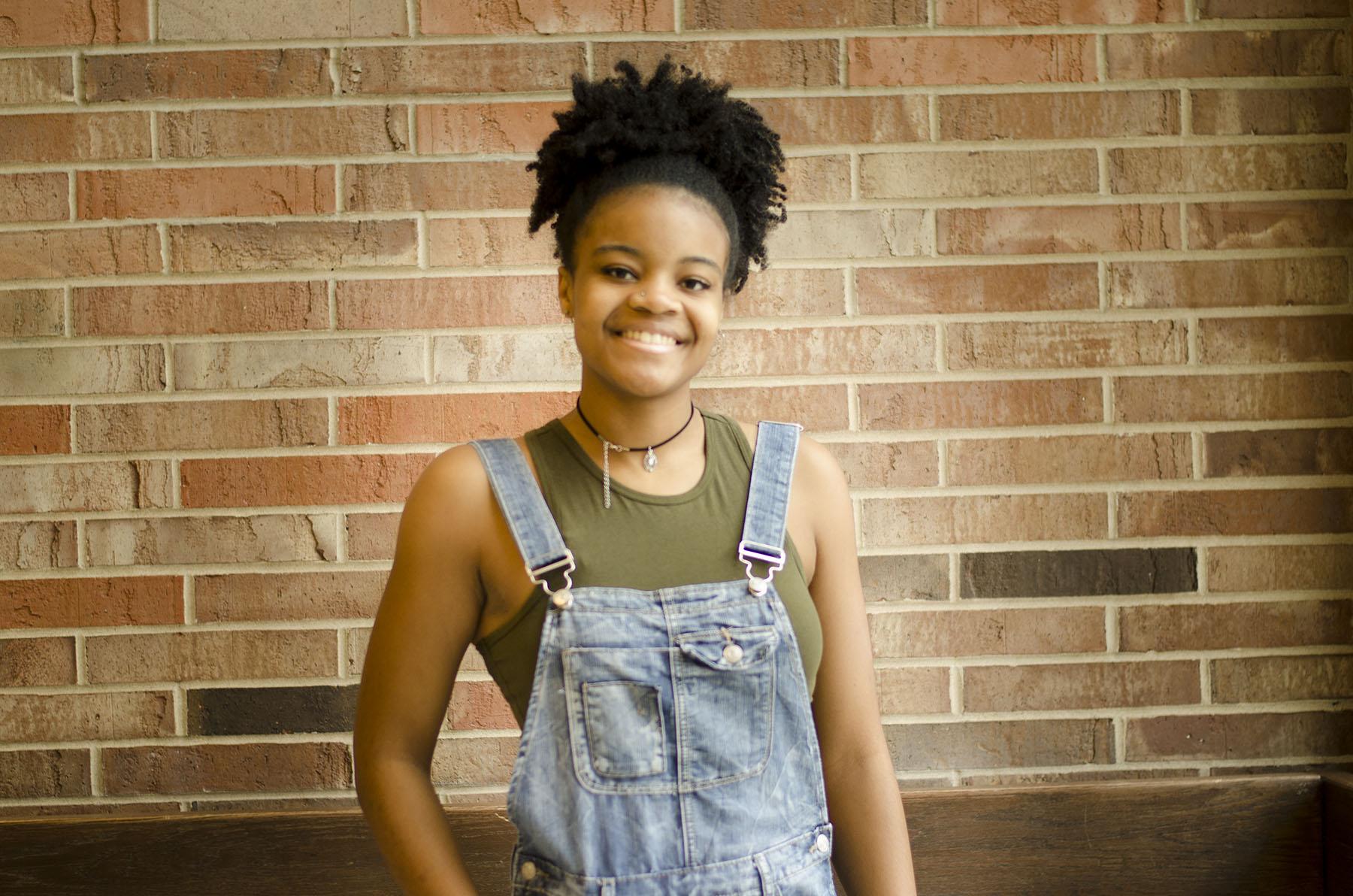Your donation will support the student journalists of West High School. Your contribution will allow us to purchase Scholarship Yearbooks, newsroom equipment and cover our annual website hosting costs.
Beyond the times: Jade Merriwether on confidence and creating social change
The WSS sat down with Jade Merriwether ’17 to discuss her role as a co-founder of the group Students Against Hate and Discrimination in part two of our series.
December 6, 2016
While many witnessed the aftermath of the shooting of Michael Brown on television, Jade Merriwether lived it. Before moving to Iowa City from St. Louis during her sophomore year of high school, she witnessed protests firsthand. Now, she has devoted her senior year to being an activist against discrimination in Iowa City schools.
West Side Story: Every day the New York Times chooses a single quote from the paper. Your quote was chosen for November 20th. How did that feel?
Jade Merriwether: It’s humbling. I feel good, to be the face of the movement. The front page article really got people’s attention. It got people to listen. There were some comments that were ridiculous, but there were also some that were very supportive. It was less about us being on the front page, but sparking a conversation which was the goal in the first place. [New York Times] was just a platform.
WSS: What was the inspiration for the organization Students Against Hate and Discrimination?
JM: Honestly after the results of the election, [there were] heightened tensions between students both in and out of school. A lot of my friends were affected. Instead of complaining and doing nothing, we decided that we should have a say in our learning space. We decided to take action and get other students involved, and now the nation knows that this shouldn’t be tolerated
WSS: How did you prepare for the march?
JM: After the walkout, Lujayn and Raneem Hamad, Ala Mohamed, Jillian Baker and I met with school board member LaTasha DeLoach. From there, we reached out to local organizations like the Center for Workers Justice, and that helped spread the word. They were helpful in giving us connections to the press.
WSS: Did you have any concerns before the march?
JM: My concern for the march was that people would spin it into an anti-Trump event, and I predicted that the press would try to do that. That is why I thought it was important to get the press release out. I expected 100 people to show up, and there were over 400 people that attended. I was really surprised to see so many young kids attend.
WSS: What gave you the confidence to organize these events?
JM: I wasn’t nervous throughout any of this. The press was really excited to see us. There have been comments about how this reflects the school negatively, but this movement is not against the administration, although there are some weak spots. It is more about focusing on our demands with the administration. I definitely think my upbringing helps. I am naturally passionate about social issues, and my parents are very vocal. I’ve always been against people feeling the need to be silent. It slows progress down.
WSS: The sit-in gained much more exposure than the walk-out. What was it like to participate in that?
JM: I didn’t expect there to be so much attention. Although people were laughing, pointing and taking pictures, most of the people understood what we were doing and were being respectful of our space. It was a good juxtaposition to the protest. We were protesting silently, whereas the walkout was very [vocal].
WSS: What is next for Students Against Hate and Discrimination?
JM: We are planning on getting a couple of different programs started. We are working on ways to maintain communication with administration, and to get committees set up to work on ways to minimize discrimination and increase diversity in our schools.
Featured Image by Sarah Longmire.

